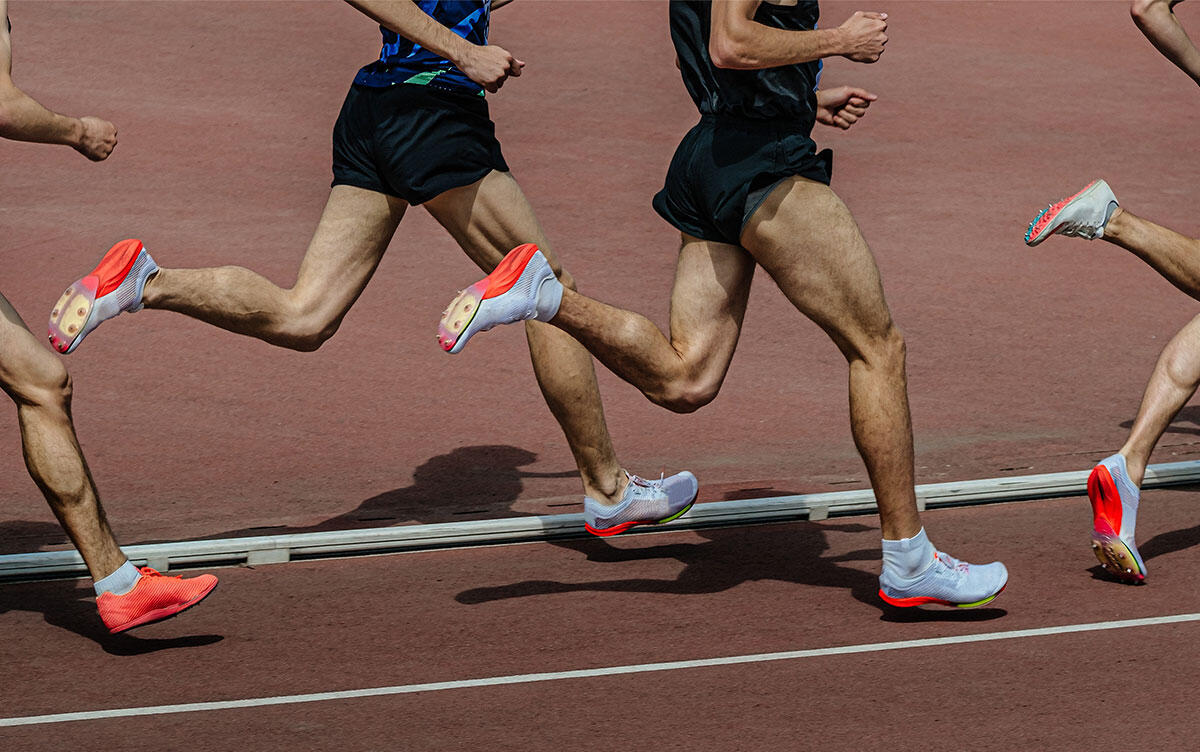Research News
Lower Limb Morphology in Endurance Runners Reveals a Human Advantage
 Image by Real Sports Photos/Shutterstock
Image by Real Sports Photos/Shutterstock
Researchers at University of Tsukuba have made a surprising discovery related to running: the lighter lower limbs of endurance runners do not lead to a proportional improvement in the "mechanical ease of leg swing." This finding highlights a fundamental human characteristic—changes in body mass, whether due to lean or fat tissue, are preferentially distributed proximally to allow the legs to maintain their ease of leg swing even with higher body mass.
Tsukuba, Japan—Humans are among the most capable long-distance runners in the animal kingdom. However, body shape and composition vary individually, reflecting adaptations to common movement patterns. In running, the extended lower limb swings back and forth. A lower limb with a "top-heavy bottom-light" mass distribution is mechanically advantageous for swinging, facilitating economical locomotion. This prompts the following question: do habitual runners acquire limbs that are easier to swing through adaptive processes, or do humans possess an inherent ease of lower-limb swing irrespective of fat mass?
To address this issue, researchers employed magnetic resonance imaging to construct detailed three-dimensional models of the internal structures—bone, muscle, and fat—of the lower limb of height-matched male runners and non-runners. Then, they precisely calculated the mass and ease of rotation (i.e., moment of inertia) of the lower limbs. The results showed that although runners had lower lower-limb mass than non-runners, the decrease in moment of inertia was not proportional to the mass reduction.
The aforementioned finding implies that "the lower limbs of non-runners can more easily swing than expected given their higher body mass." In essence, the human body appears to possess a built-in mechanism that preserves running economy by maintaining the ease of lower-limb swing, even with higher body mass. This could be a basic human trait that enables our species to travel economically over long distances.
These findings offer new insights into the structure and function of human legs and may contribute to a deeper understanding of human locomotion.
###
This work was supported by JSPS KAKENHI Grant-in-Aid for Young Scientists to Natsuki Sado (21K17592).
Original Paper
- Title of original paper:
- Proximal-specific reduced mass of lower limbs in male endurance runners does not result in improved mechanical ease of leg swing in proportion to reduced mass
- Journal:
- Journal of Biomechanics
- DOI:
- 10.1016/j.jbiomech.2025.113012
Correspondence
Assistant Professor SADO Natsuki
Institute of Health and Sport Sciences, University of Tsukuba
EDOGAWA Takeshi
Doctoral Program in Sports Medicine, Degree Programs in Comprehensive Human Sciences, Graduate School of Comprehensive Human Sciences, University of Tsukuba
Related Link
Institute of Health and Sport Sciences




